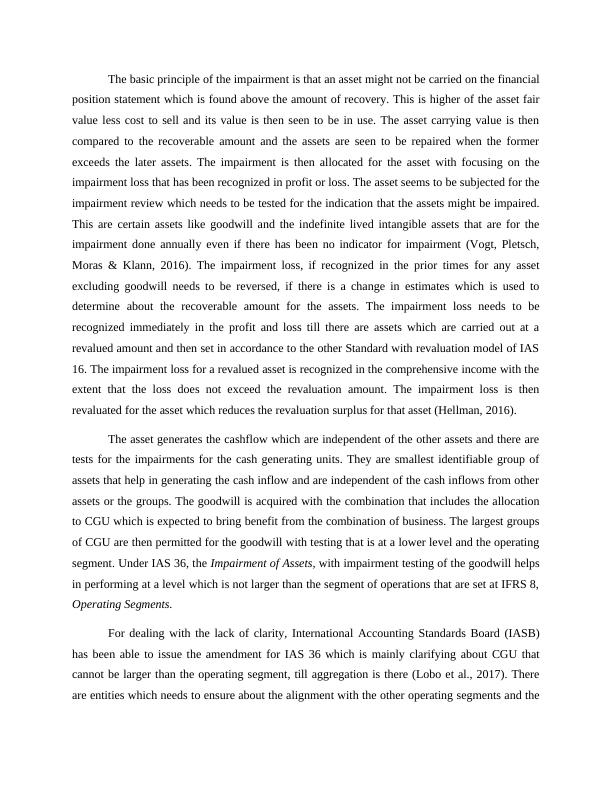Impairment loss on Cash generating Units excluding goodwill
4 Pages1261 Words393 Views
Added on 2023-06-05
About This Document
This essay explains the principles of impairment loss, allocation of impairment loss, and impairment testing of cash generating units excluding goodwill. It also discusses the recent amendment for IAS 36 and the effect of joint auditor pair composition on audit quality. The essay provides insights into the variables used to manage the goodwill impairment test under IAS 36 and the effect of real activities on avoiding goodwill impairment losses.
Impairment loss on Cash generating Units excluding goodwill
Added on 2023-06-05
ShareRelated Documents
End of preview
Want to access all the pages? Upload your documents or become a member.
Corporate Accounting, Reporting Assignment
|6
|1465
|125
(pdf) Corporate Accounting Assignment Sample
|6
|1554
|20
Corporate Accounting - Assignment
|7
|1508
|125
Impairment loss for cash generating units including goodwill
|6
|1462
|114
Accounting for Impairment Loss on Cash Generating Unit
|9
|1830
|485
Corporate Accounting Assignment | Reporting Assignment
|9
|2003
|36


